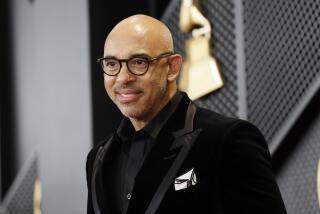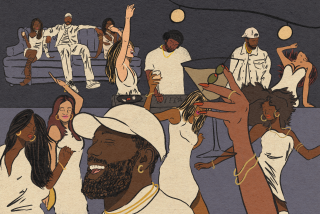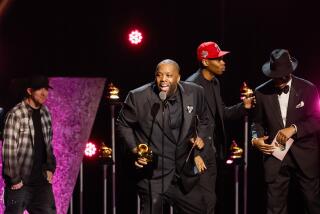Industry Lowers Volume on Drug Policing
- Share via
While the world was watching the Grammy Awards recently, something happened behind the scenes that was of more lasting significance to many in the music industry.
Four music business figures were confronted about drug problems and allowed themselves tobe placed in treatment for addiction.
“We had a ‘safe harbor’ room backstage at Madison Square Garden, an alternative green room with no alcohol,” says Mike Greene, president of the National Academy of Recording Arts & Sciences and an outspoken figure in the debate about industry drug policy.
“There were counselors on hand and they held [Alcoholics Anonymous-type] meetings twice a day during Grammy week,” Greene says. “And four interventions were done for people who were attending the show.”
These interventions, though done in the midst of the industry’s most-watched event, happened virtually without a peep.
“It was all done with confidentiality, very quiet,” says Greene.
It was a sharp contrast to the rancorous debate and headline-level exposure surrounding Stone Temple Pilots singer Scott Weiland’s battles with addiction and the overdose death of Smashing Pumpkins sideman Jonathan Melvoin last year. That kind of publicity was cited by many record executives who were doubtful that any industry-wide program could be implemented without violating the privacy of artists and employees.
Even Buddy Arnold, director of the nonprofit Musicians’ Assistance Program (MAP), which was designated late last year to coordinate music-industry drug education and treatment, was unaware of the interventions. But he welcomes this sign that action has replaced talk.
“It is very nice,” Arnold says of the discretion.
More to Read
The biggest entertainment stories
Get our big stories about Hollywood, film, television, music, arts, culture and more right in your inbox as soon as they publish.
You may occasionally receive promotional content from the Los Angeles Times.










